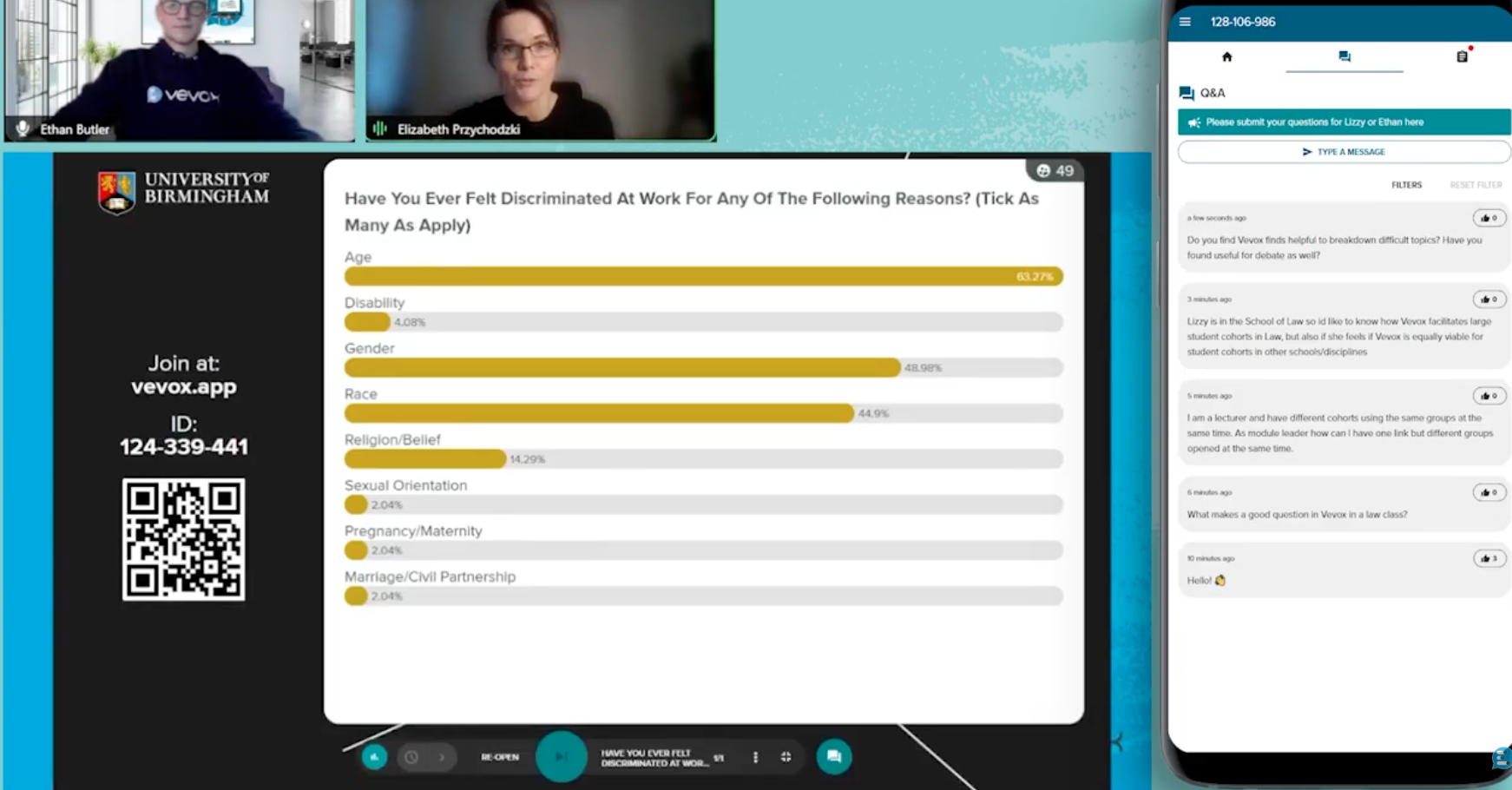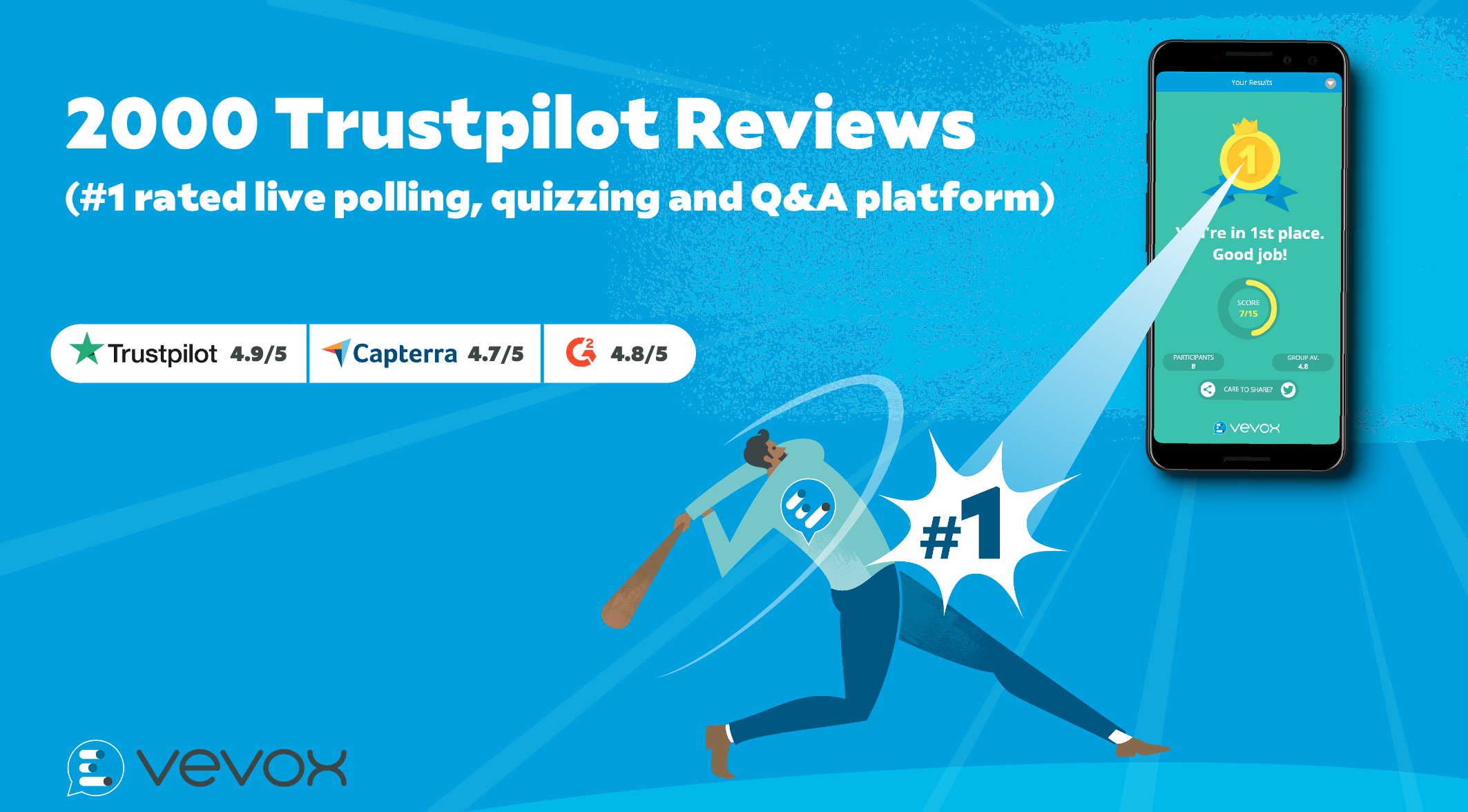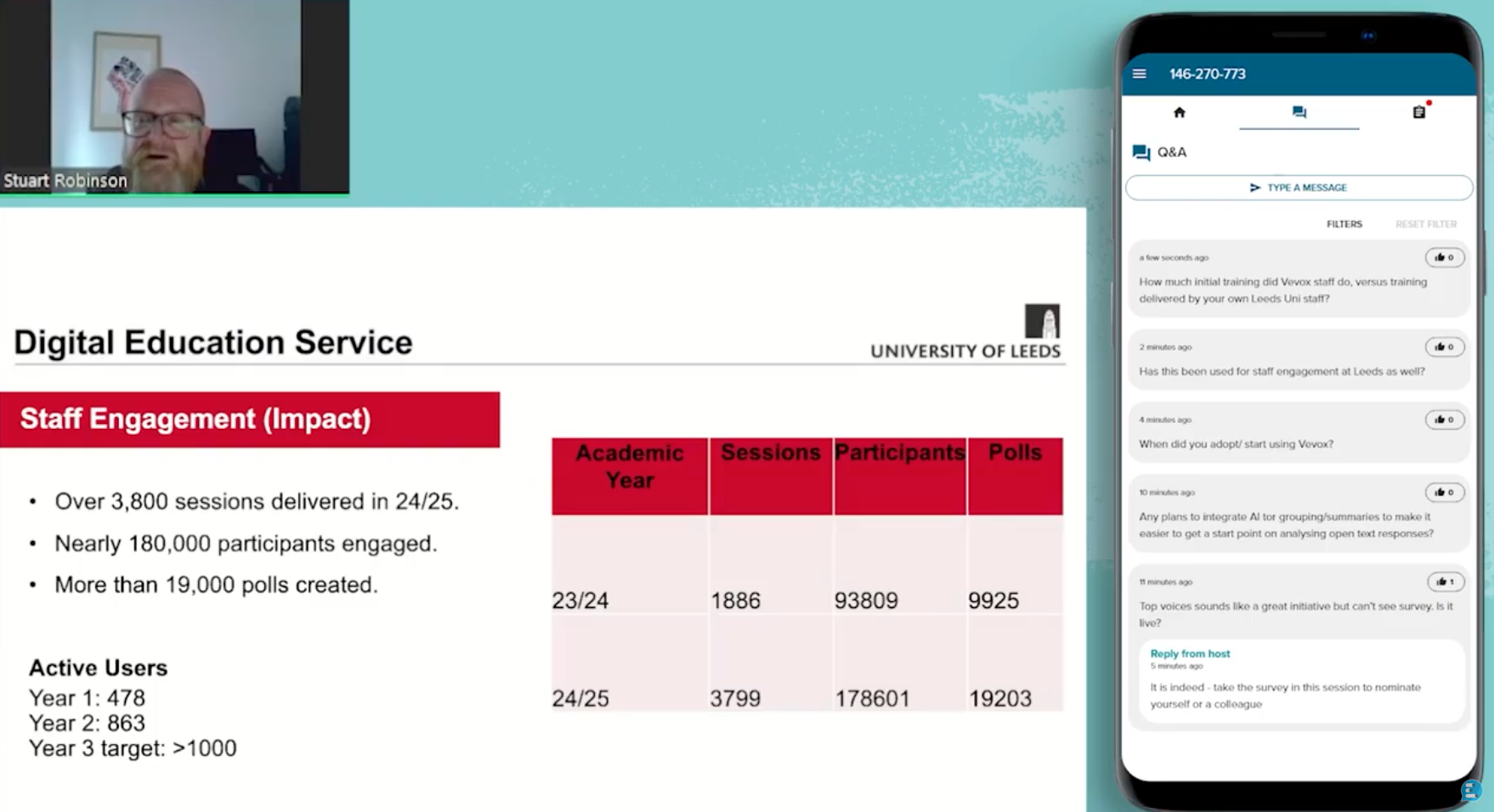Hybrid and Hyflex Learning in Higher Education – Educators reflect on their experience so far with hybrid classes and look ahead to AY 21/22
After the rush to get teaching and learning online in 2020, and the hope that the new academic year may bring a return to familiar territory, educators and students alike are discovering that we are now in a new situation – one that is centered around a hybrid or hyflex environment.
In a recent webinar, Joe from our education team facilitated a discussion with 3 guest panelists about their experience so far with a hybrid approach to teaching and learning. Our guests were Carl Sykes from University of South Wales, Robert O’Toole from Warwick, and Carol Chatten from Edge Hill University - If you missed it, you can catch the replay and Q&A here.
In this blog we’re going to explore some of the focal points of the conversations we’re having with educators, how institutions are tackling hybrid or hyflex teaching and their own firsthand experiences, including how Vevox is playing a part in hybrid classes.
Are teachers and students ready for hybrid classes?
The overwhelming consensus from speaking with lecturers and learning technologists is that adoption and readiness for hybrid teaching and learning is mixed.
Carl Sykes reflects, “In the last year people have realized that this change to online, and now hybrid, needs to be embraced. At some points in time, online classes were the only way teaching could take place, so staff have gotten involved like they never have done before. In the last 6 months we have been looking at examples of integrated hyflex environments, such as those at Warwick, and we are running dedicated pilot rooms as a trial over the summer to better understand how to use hardware and software in collaboration for hybrid and hyflex learning.”
A common scenario that we’ve heard is that lecturers have started to include more asynchronous classes as a starting point and that this has been helpful in the realization of the direction in which HE teaching is going.
Carl reiterates, “Teaching should always come first, but staff are realizing just how technology and a hybrid or hyflex approach can support teaching and learning."
Carol notes that she has been positively surprised at the uptake of teaching staff trying new methodologies and approaches, with educators asking to attend sessions to help learn what they can use. Carol states, “I have seen an uptake in attendance of training and support sessions and a different profile of people attending. Educators are becoming more confident now having been put in the situations they have been facing – it's been encouraging to see people being creative with their teaching approach, using technology and inspiring others.
It feels like overall, the experience of understanding and trialing hybrid classes has brought a sense of solidarity, but this is not without uncertainty.
Robert poses the question, “What are the boundaries for hybrid?” … a question that many institutions will be grappling with – how do educators decide which classes are to be designed and taught as hybrid, or is it necessary for all classes, where possible and reasonable, to be designed as hybrid first?
Robert empathizes, “For some educators, it’s confronting to have to think about how their teaching might need to adapt, but first and foremost it’s about allowing students to learn in the way that is best for them.”
Considerations for hybrid teaching and learning
One of the biggest misrepresentations of a hybrid or hyflex teaching approach, is to reduce it down to location alone. Robert points out, “Hybrid is quite different, we have to be cautious and understand that maybe not everyone will find it easy to adapt to teaching in this way. Not everyone is confident with technology and not everyone is technologically inquisitive, and fundamental to the hybrid approach is to view this teaching method with a designer mindset.”
Carl agrees, saying, “Staff are having to completely change their way of teaching, everything is different, even walking ‘into the room’ be that physically or virtually.” He also makes it clear that we have to put people first, both teaching staff and students, and avoid ‘shoe-horning’ hyflex or hybrid classes in as, “it must be the right choice and staff need to be supported and adequately prepared. A hybrid/hyflex environment won’t be ready from day one.”
Carol echo's this and comments, “We're not a city campus, we’re out in the sticks and we know that students benefit from being on campus. Students have said they like the convenience of learning online, and it has some benefits for engagement.
Our students have fed back on which sessions have been helpful online and which are better face to face, so we’ll make the provision for being online but have the flexibility to shift.”
Another fundamental consideration for hybrid and hyflex environments is the hardware. Carl raises a great point in that when students are required to attend classes off campus, the onus is on the students to have everything they need to take part, including a suitable learning environment and any hardware or software that forms part of their learning. Carl explains, “Bring your own device (BYOD) raises its own issues, including digital poverty - will student’s devices be able to run the software required, who will provide training and support on how to use any software and how do we make sure everyone is catered for?”
Robert also comments that AV teams are busy putting kit into classrooms rooms but it's important to acknowledge that to get hybrid classes working smoothly it will take training and some time for people to feel confident, he says, “...the more you kit out the room with tech, such as digital whiteboards etc., the more disparate it can feel for people who are attending online who cannot join in.”
Robert concludes, “Excellent classroom teachers can find it harder to teach online, as their style and approach is based on the physical movement and flow of the classroom. You need the students on your side. Good educators build relationships in the room and use the ‘social glue’ to overcome any obstacles that arise... and they will.”
Being prepared for hybrid classes
Clearly, there is much to consider when planning for hybrid/hyflex learning and having the right kit is just one part of the equation. In discussions our education team have been having with educators, they have heard a huge variety of experiences and suggestions for how to successfully prepare for a hybrid/hyflex classroom and below are just some of the pieces of advice that have been shared...
-
It's not just about finances and fancy equipment – Consider the practicalities such where will power sockets be placed if we’re expecting students to be working primarily using digital devices that require power/charging.
-
Be sure to use device agnostic technology. Make sure your software works (and the experience is the same) on all tech and devices.
-
Carefully consider microphone placements in classrooms. There are pros and cons (and privacy considerations) to people’s conversations and ambient noise being recorded.
-
As a lecturer in a hybrid/hyflex setting its vitally important to introduce the set-up of the room to your students, including covering off what is being recorded.
-
Hybrid/hyflex resource timetabling & time zones – hybrid/hyflex rooms can only be used at certain times. Think about how this could affect international students that won’t be able to travel to attend in person. How will this impact their learning experience, does this create learning inequality?
-
Plan to have 2 staff in the classroom - one teaching and one moderating. This can help to prevent staff burnout from having to run multiple sessions across different time zones.
-
Consider including mandatory icebreaker polls to take a student learning health check in each session and to help get continuous feedback about the learning experience.
-
Rather than only investing in adding resources to your teaching toolkit, focus on using what you have and using it well.
-
Institutions need to provide consistency around hybrid/hyflex learning for both teaching staff and students. A hybrid/hyflex approach should not be mandated nor should it be completely free choice, there needs to be a sensible middle ground.
-
Leverage using flexible tools such as Vevox to enhance learning design. Engagement tools makes lecturers design and structure in opportunities for students to participate in an equal way and get broader engagement and more through feedback.
-
Ensure you have or prioritize a support resource to help get lecturers started, especially when using new technology. Taking this time (even just 10 mins) really helps it to take off. Investing in the people and the lecturer is where success with hybrid/hyflex starts.
-
If hybrid/hyflex teaching becomes more frequent, it makes sense to use technology in ways that can easily transfer between face to face and virtually and not create an either-or situation.
Our education team continue to support Institutions that are preparing for and now adapting their teaching for hybrid classes, and always welcome having an open dialogue about the challenges that are faced and the opportunities that it presents. Learn more about how Vevox can support your hybrid classes here.




